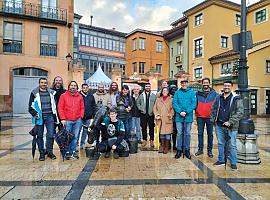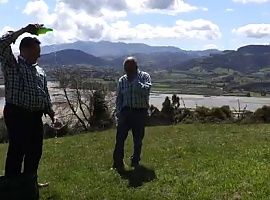Una nueva investigación establece bases para la nueva generación de giroscopios ultrasensibles para medir la gravedad, el campo magnético, y crear circuitos cuánticos
Un equipo de Cambridge han desarrollado un chip semiconductor que convierte los electrones en un estado cuántico que emite luz, y es lo suficientemente grande como para verlos a simple vista. Su investigación se publica hoy, 08 de enero en la revista Nature Physics.
La mecánica cuántica normalmente muestra su influencia sólo en pequeñas partículas a temperaturas ultra bajas, pero el grupo de electrones se mezcla con la luz para sintetizar partículas cuánticas del grosor de un cabello humano, que se comportan como superconductores.
Quantum mechanics normally shows its influence only for tiny particles at ultralow temperatures, but the team mixed electrons with light to synthesise supersized quantum particles the thickness of a human hair, that behave like superconductors.
Building microscopic cavities which tightly trap light into the vicinity of electrons within the chip, they produced new particles called ‘polaritons’ which weigh very little, encouraging them to roam widely.
Dr Gab Christmann working with Professor Jeremy Baumberg and Dr Natalia Berloff of the University of Cambridge, together with a team in Crete, produced the special new samples needed which allow the polaritons to flow around at will without getting stuck.
Injecting them in two laser spots, they found that the resulting quantum fluid spontaneously started oscillating backwards and forwards, in the process forming some of the most characteristic quantum pendulum states known to scientists, but thousands of times larger than normal.
According to Christmann: “These polaritons overwhelmingly prefer to march in step with each other, entangling themselves quantum mechanically.”
The resulting quantum liquid has some peculiar properties, including trying to repel itself. It can also only swirl around in fixed amounts, producing vortices laid out in regular lines.
By moving the laser beams apart, Dr Christmann and his colleagues directly controlled the sloshing of the quantum liquid, forming a pendulum beating a million times faster than a human heart.
Dr Christmann added: “This is not something we ever expected to see directly, and it is miraculous how mirror-perfect our samples have to be.We can steer our rivers of polariton quantum liquid on the fly by scanning around the laser beams that create them.”
Increasing the number of laser beams creates even more complicated quantum states.
The goal of the work is to make such quantum states using an electrical battery and at room temperature, which would allow a new generation of ultrasensitive gyroscopes to measure gravity, magnetic field, and create quantum circuits.
But as Christmann says: “Just to see and prod quantum mechanics working in front of your eyes is amazing.”
The research was funded by the Engineering and Physical Sciences Research Council and the EU.
Imagen




















